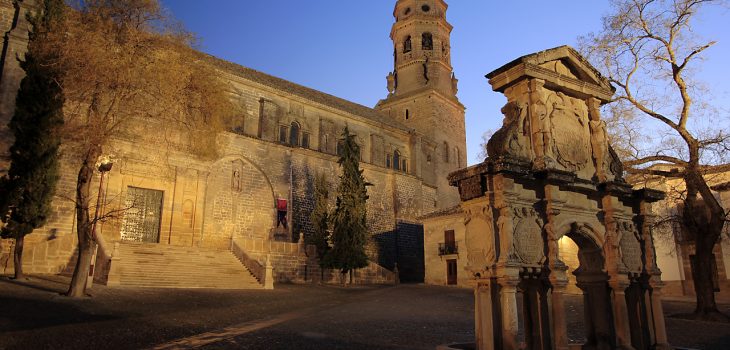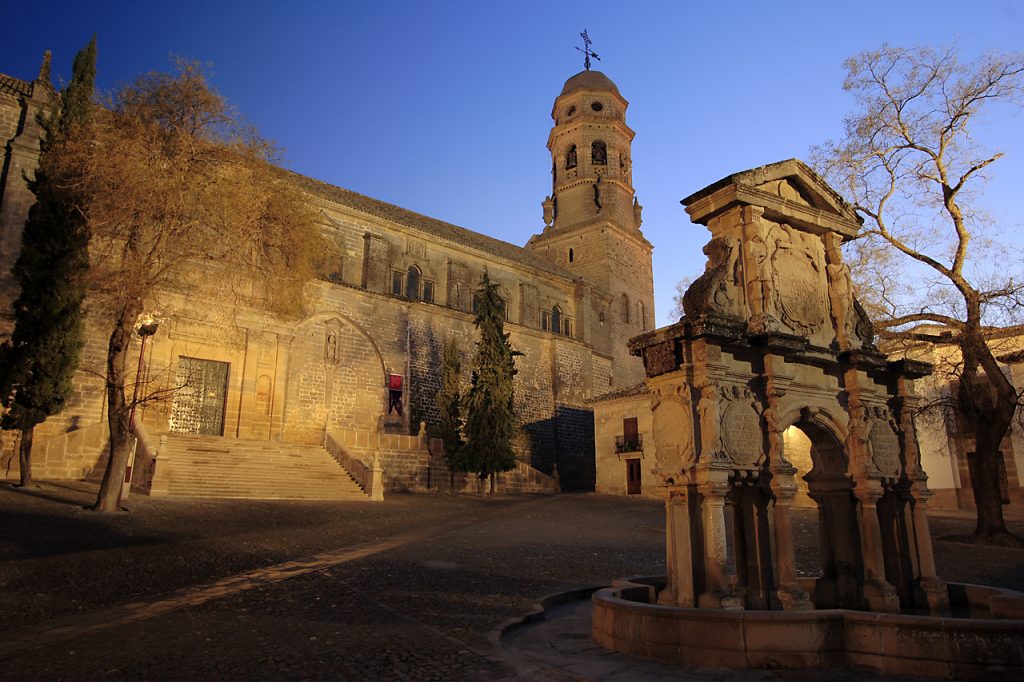
Cathedral, Square and Fountain of Santa María

The space that makes up the Cathedral of Baeza, the square and the fountain of Santa María are main elements in Federico García Lorca’s description of the city in Lost City (“Ciudad Perdida”).
Plaza de Santa María is the one that contains part of the main buildings of interest such as the Cathedral itself, the Palace of Jabalquinto or the old Town Hall.
LOST CITY (BAEZA) I Baeza (…)
This square, an impressive romantic expression where antiquity displays its ancestry of melancholy, a place of retreat, of peace, of manly sadness, was planned to be desecrated when I visited Baeza.
(…)
Besides, Santa María fountain, which takes the name of the square and which, together with the fountain of the Lions in the Plaza del Pópulo, is the most emblematic of Baeza. Built in the Renaissance style by the middle of the 16th century, it has a lower body made up of three openings, together with a columnar structure with two fronts, where the coat of arms of Felipe II can be seen.
LOST CITY (BAEZA) I Baeza
At its center a source of pagan severity, it looks like the final body of a triumphal arch that the earth has swallowed up.
(…)
Finally, the Cathedral of Baeza, an Asset of Cultural Interest since 1931 and which has been erected over successive buildings: a Roman temple, later a mosque, until its conversion to Christian worship in the 13th century.
Since then, it has undergone numerous architectural transformations to its current state, with multiple elements from different periods, such as the Moon Gate (Puerta de la Luna), in the Gothic-Mudejar style; the Absolution Gate (Puerta del Perdón), in the Gothic style; or the main facade, which is in the Renaissance style, which is its most dominant character. Andrés de Vandelvira collaborated in the Renaissance reform.
The interior of the Cathedral of Baeza also presents different styles, with Gothic pillars, ribbed vaults, Renaissance grills, Mudejar chapels and Renaissance chapels, as well as the main altarpiece, in the Baroque style. The Cathedral Museum also preserves pieces of great value and recognized prestige
LOST CITY (BAEZA)
I Baeza
(…)
The cathedral covers the square with its shadow, and scents it with its smell of incense and wax that seeps through its walls as a reminder of holiness.
(…)